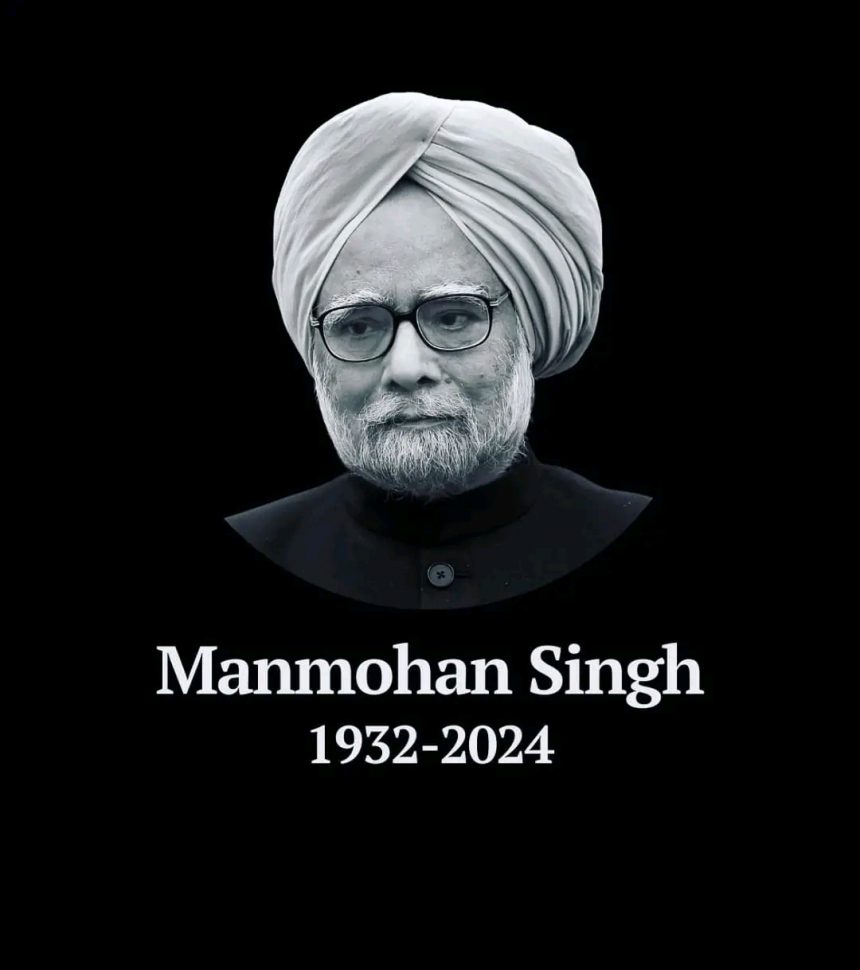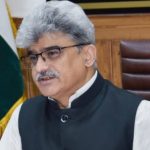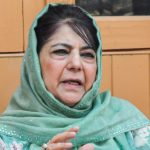TRIBUTE
India, a nation of profound diversity and rich history, has been sculpted by numerous visionaries. Among them, Dr. Manmohan Singh stands out as a beacon of economic transformation and political integrity. His recent passing on December 26, 2024, marks the end of an era that witnessed India’s emergence as a global economic powerhouse.
Born on September 26, 1932, in Gah, Punjab (now in Pakistan), Dr. Singh’s early life was marked by the upheavals of partition, which led his family to migrate to India in 1947. Undeterred by challenges, he pursued academic excellence, earning his bachelor’s and master’s degrees in Economics from Panjab University. His quest for knowledge took him to the University of Cambridge, where he obtained an Honours degree in Economics in 1957, followed by a D.Phil. from the University of Oxford in 1962. His doctoral thesis, “India’s Export Trends and Prospects for Self-Sustained Growth,” provided critical insights into India’s trade policies, laying the groundwork for his future contributions.
Dr. Singh’s illustrious career spanned academia, international organizations, and key governmental positions. He served as Chief Economic Adviser (1972–1976), Governor of the Reserve Bank of India (1982–1985), and Deputy Chairman of the Planning Commission (1985–1987). However, it was his tenure as Finance Minister from 1991 to 1996 that etched his name into India’s economic history.
In 1991, India faced a severe economic crisis characterized by a burgeoning fiscal deficit, depleting foreign reserves, and an imminent balance of payments collapse. Entrusted by Prime Minister P.V. Narasimha Rao, Dr. Singh introduced a series of groundbreaking reforms that dismantled the License Raj, reduced trade barriers, and opened the economy to foreign investment. These measures not only averted the crisis but also set India on a trajectory of sustained economic growth, integrating it into the global economy.
His budget speech of 1991 resonated with optimism and determination as he quoted Victor Hugo: “No power on Earth can stop an idea whose time has come.” Dr. Singh’s visionary policies transformed India’s economic landscape, fostering entrepreneurship, innovation, and elevating millions out of poverty.
Ascending to the role of Prime Minister in 2004, Dr. Singh became the first Sikh to hold the office, leading the Congress-led United Progressive Alliance (UPA) government. His decade-long tenure was marked by significant economic growth, social welfare initiatives, and efforts to enhance India’s global stature.
Under his leadership, India achieved impressive GDP growth rates, peaking at 9% in 2007. Dr. Singh’s administration launched pivotal programs aimed at inclusive development:
- Mahatma Gandhi National Rural Employment Guarantee Act (MGNREGA) (2005): This initiative provided a legal guarantee for at least 100 days of employment to rural households, significantly improving rural livelihoods and reducing poverty.
- Right to Information Act (2005): Empowering citizens to seek information from public authorities, this act enhanced transparency and accountability in governance.
- National Rural Health Mission (2005): Aimed at improving healthcare delivery across rural India, this mission addressed critical health indicators and strengthened infrastructure.
- Expansion of Educational Institutions: His government established new Indian Institutes of Technology (IITs) and Indian Institutes of Management (IIMs), broadening access to quality higher education.
On the international front, Dr. Singh’s tenure was marked by strategic partnerships and diplomatic achievements. The U.S.–India Civil Nuclear Agreement in 2008 ended India’s nuclear isolation, enabling access to nuclear technology and fuel for civilian purposes. His advocacy for India’s interests on global platforms elevated the nation’s standing in international affairs.
Dr. Singh’s leadership was distinguished by his unwavering integrity, humility, and commitment to public service. Despite the complexities of coalition politics and global economic challenges, he remained focused on policies that promoted inclusive growth and social justice.
His personal life reflected his professional ethos. Married to Gursharan Kaur in 1958, they had three daughters, each accomplished in their respective fields. Dr. Singh’s humility and simplicity endeared him to many, and his intellectual rigor earned him respect across political and ideological spectrums.
In his later years, Dr. Singh faced health challenges, including multiple cardiac surgeries. He continued to contribute to public discourse, offering insights on economic and national issues. On December 26, 2024, Dr. Singh was admitted to the All India Institute of Medical Sciences (AIIMS) in New Delhi, where he breathed his last. His passing marks the end of a significant chapter in India’s history, leaving behind a legacy that will inspire generations.
Dr. Manmohan Singh’s life was a testament to the profound impact of visionary leadership grounded in intellect, integrity, and compassion. As an economist, he liberated India’s economy, setting it on a path of growth and globalization. As Prime Minister, he championed inclusive development, transparency, and international cooperation.
His demise is a moment of reflection for the nation—a time to honor his contributions and reaffirm the values he stood for. Dr. Singh’s legacy will continue to guide India’s journey toward economic prosperity and social equity, embodying the ideals of service and dedication to the nation.
In remembering Dr. Manmohan Singh, we celebrate a life devoted to the betterment of society, a mind that envisioned a progressive India, and a leader who transformed that vision into reality. His story is not just a chapter in India’s history but a beacon for its future.
(Author is a columnist and can be reached at: [email protected])










